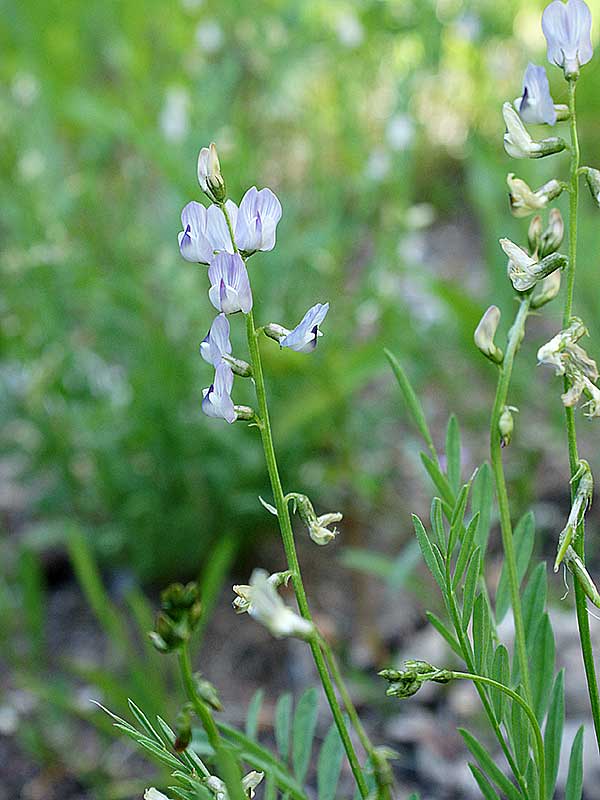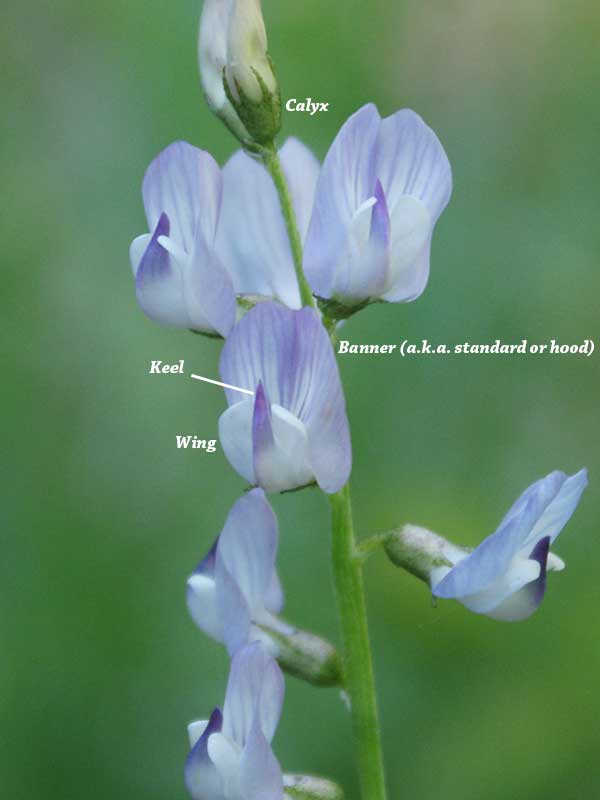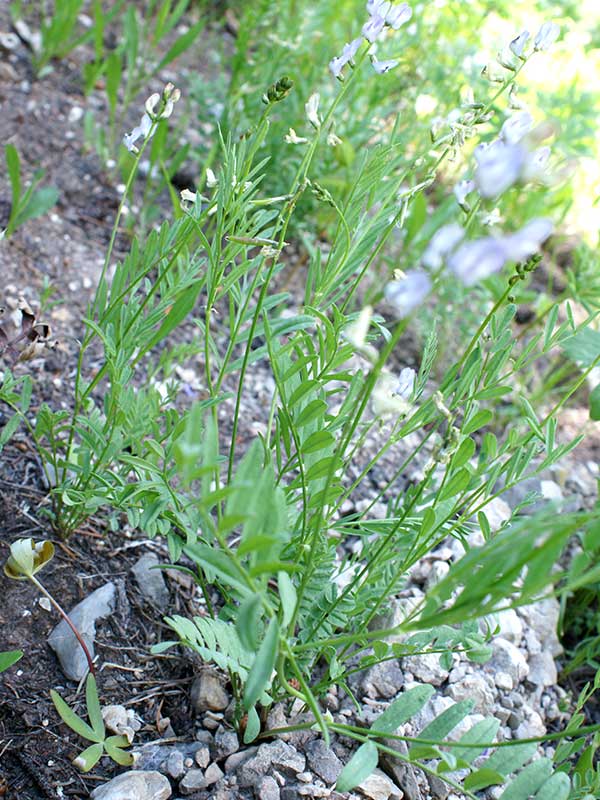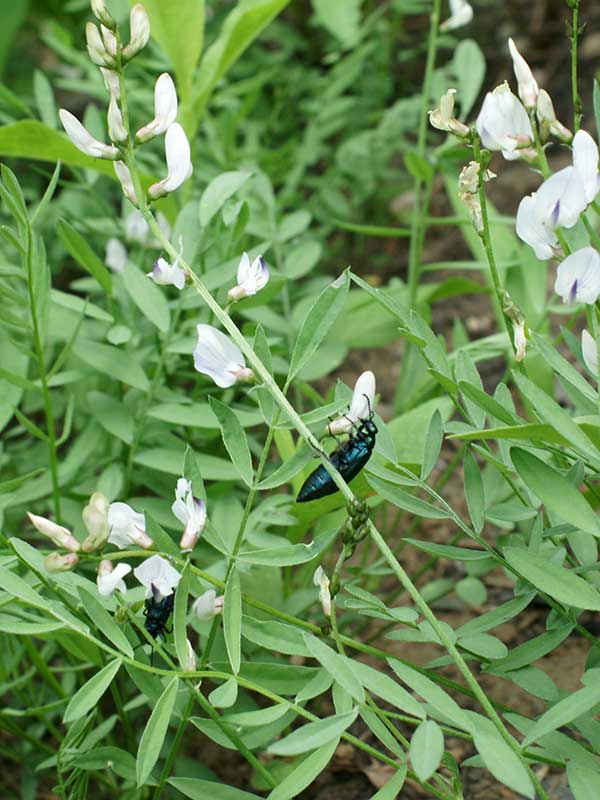Astragalus miser / timber milkvetch
- compound leaves with small, egg-shaped leaflets
- teeny, pea-like flowers – bicolored but overall blue/purple
- keel tip is purple and pointed
- small, hairy seed pods
- grassland, meadows, and other open communities
Also known as: alpine sweetvetch
Timber milkvetch is a perennial herb growing annually from a caudex anchored with a taproot and rhizome network. It is most often found in grassland, meadows, sagebrush communities, on roadsides, or in open woodland.
Timber milkvetch flowers in spring and disperses its seed at the end of the summer. Flowering, it is a plant of variable appearance in terms of flower coloration and markings. Basically, the plant has pea-like flowers (being a legume). The banner petal (see labeled photo here or in the gallery) is purple/blue-ish. On the specimen photographed here, the main color is light blue-ish with darker veins. (A note of warning: my mother taught me my colors and there are those, even in my family, who claim she got them wrong). The wing petals are white. The keel is white at the base with a dark purple tip. Indeed, this coloration is regardless of the color variations for the rest of the flower and is important for indentification. Most importantly for identification of this Astragalus to species is that the keel is pointed!
The calyx, shown at the top of the labeled photo, is green and somewhat hairy. The lobes are pointy, or “sharply triangular”. Despite all the detail discussed here, the individual flowers are only teeny, about ½ inch long. They occur on a spike (raceme) of from five to twenty flowers, packed together initially, but spreading out as the stem elongates.
Timber milkvetch’s bean-like fruit pods (sorry, no photos) are short (½ inch) and droop when mature. They are covered with short black and white hairs. Unlike familiar things such as beans and peas (but like soybeans) the fruits are dry when mature. If you shake them, they rattle. This is sort of cool because the Greek word, astragalos, means anklebone. Astragali – the real ones – were used as dice, giving rise to the slang word, “bones”. The small light seeds are easily dispersed by wind and water.
Timber milkvetch’s leaves are oval and up to 6 inches long. They don’t look that way, though, because they are compound, composed of between 7 and 21 small, egg-shaped leaflets. They may be hairy or glabrous. At the base are a pair of thin stipules. A distinguishing feature of the genus is that the leaves do not have tendrils.
Interesting bits – First, note that timber milkvetch is not edible. It is poisonous to grazing animals due to N-based toxins, especially miserotoxin (which I include because I like the name) and a tendency to hyperaccumulate selenium. Miserotoxin can cause both acute and chronic symptoms in cattle, but they are not especially common because (1) it is forage of last resort and not eaten when there is grass available, and (2) after grazing, timber milkvetch regrowth has substantially less toxin. Nevertheless, don’t eat it.
The genus, Astragalus, is a large one and there are about 375 species with an associated plethora of varieties and subspecies in North America. The majority of these are found in the mountains and deserts of the west. Many are rare and specialized.
Acknowledgment – My thanks to Walter Fertig and Aaron Liston at iNaturalist for setting me straight on the identity of this species.
| Color | |
|---|---|
| Family | |
| Blossom size | |
| Inflorescence size | |
| Inflorescence type | |
| When? | |
| Where? |




